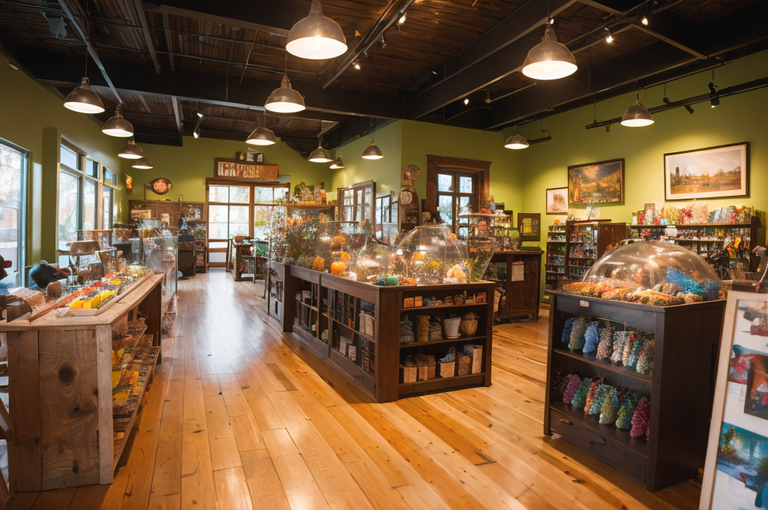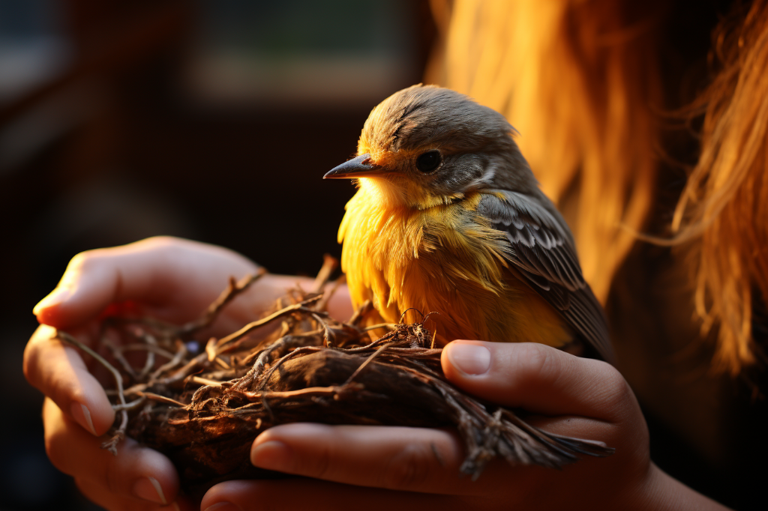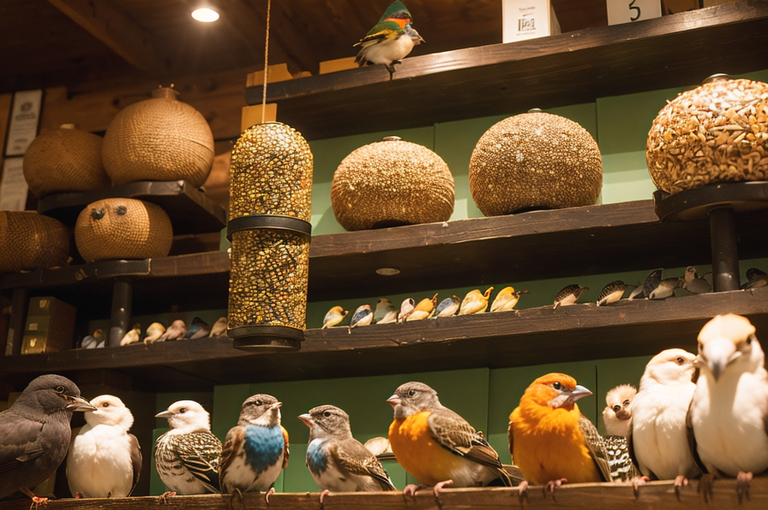Essential Guidelines for Assisting Injured and Orphaned Birds: Care, Rescue, and Conservation

The article provides guidance on dealing with injured or abandoned birds, responding appropriately, the role of licensed professionals, temporary captivity care, and supporting bird conservation efforts.
Identifying and Assessing Injured Birds
Ah, the delicate subtleties of the avian universe, where even the littlest flutter may indicate a need for assistance. A hint of wisdom I’ve gathered from the Ohio forests and Alaskan highlands alike is understanding how to take care of a wild bird. And this starts with the first crucial step—identifying and assessing injured birds.
Determining the bird’s situation
Before leaping into action, I can’t overstate the importance of taking time to understand their predicament. Stand still. Blend in with the shadows, becoming another nuanced element in the grand, sylvan tapestry. Is that small feathered creature merely enjoying a rest, or is it in distress, desperately hoping for relief? Watch the world through the bird’s eyes until the answer is clear.
Identifying signs of distress or orphanage
Look carefully for distress indicators. Is our winged friend unable to fly, perhaps peeping with unusual frequency? Or maybe it has a puffed up plumage displaying a stark contrast against their typical sleek feathers. An apparent disorientation or over friendliness towards humans may illustrate a struggle. As sure as a Swainson’s hawk soaring against the Texan sky, these signs narrate the tale of a bird in need.
Checking for potential causes of injury
Scan the vicinity for potential causes, such as a fallen nest or storm signs, which might explain the bird’s current plight. My experience among the darting Ruby throated hummingbirds and great northern owls has taught me that understanding the cause of injury is key to the targeted and effective intervention.
Remember that despite every indication, only a skilled professional is equipped to make a definitive judgment and treatment plan. So, upon identifying an injured bird, be it in the heart of bustling New York City or the quiet depths of Alaska, ensure to contact your local wildlife rehabilitation center straight away. Their expertise will ensure the graceful lilt of the wood thrush’s song and the thunderous caw of the Alaskan raven continue to enrich our days.

Proper Handling of Nestling and Fledgling Birds
As the sun begins its morning ascent, we might stumble upon a site that stirs the heartstrings; a displaced nestling or a grounded fledgling. Nestlings, barely feathered and vulnerable, when found outside their nest, makes us question — what can i feed a wild baby bird? The best course of action, if feasible, is to safely return the nestling back to its nest. It’s a misconception that the parent birds will reject their offspring once a human has handled them. The bird parents are more likely governed by that powerful drive instinct, rather than a sense of scent.
Management of Fledglings Found on the Ground
Fledglings, on the other hand, flutter on the ground, donned with partially grown feathers. We may be tempted to intervene, to envelop this creature in a safe harbor, but remember, this is their rite of passage, their first excursion from the nest towards independence. Only when they seem injured or in danger, should our human hands reach out to help.
Avoidance of Unnecessary Removals from the Natural Environment
The early morning air is filled with their tentative chirps, echoing the ebb and flow of nature’s pulse. We must be mindful not to tinker excessively with this pulse, to avoid removing healthy birds from this environment which they are beautifully coded to thrive in. The outdoor world is their classroom, their playground. It’s within this cacophony of tweets and twitters that they learn the art of survival, singing their soul stirring symphony, riveted in nature’s concert.
Preserving the natural habitat is critical, dear readers. It’s an enriching journey, one that binds us in a web of life and survival. And it is experiences like these that continue to paint my candy colored dawn with hues of wonder and respect. Let’s all lend a hand in protecting these marvelous creatures and their enchanting world.

Management of Injured Adult Birds
With the gentle softness of an early morning chorus, I wish to guide you on how to care for injured adult birds. The journey begins by providing a safe, cool environment for our feathered friends that are in distress. 🍃
Provision of a Safe, Cool Environment for Injured Birds
Recommended every step of the way, it is paramount to avoid administering food or water to the injured. Just as we wouldn’t want to force feed a wild lark, providing a quiet, cool, and safe space to rest should be our first instinct. Interact lightly, mimicking the shelter given by a leafy canopy just after a warm summer rain.
Transference to a Wildlife Rehabilitation Center
There comes a moment when your temporary makeshift sanctuary must surrender to the care of professionals, like wildlife rehabilitation centers. Just as you’d trust a mother swallow to know when to let her chicks fly, you must follow your instincts to know when to seek help. Act swiftly, but remember to tread lightly in this delicate dance between man and winged creature.
Prohibition of Long-term Captivity
Coming to the understanding that long term captivity should be avoided is crucial. My friends, like the rooks that soar freely in places like wild birds unlimited longmont, birds are not meant to be caged for prolonged periods. Regardless of their injury, we must respect their insatiable appetite for freedom and adaptability. 🌳
The avian world is one of resplendent beauty and unmatched freedom. As stewards of this wonder, we must understand how to appropriately respond when feathers are ruffled, and wings are broken. Always remember, in times of injury and rehabilitation, care must be taken to safeguard the inherent wildness and majestic spirit of these remarkable creatures.

Importance of Professional Intervention
Reading about bird handling and rehabilitation often intensifies our curiosity about how to take care of a wild baby bird. But before you consider venturing down that path, think twice. 🤔
Necessity of licenses and permits to handle wildlife
Pulling from my experience as both an ornithologist and a lifelong bird enthusiast, I urge you to understand the weight of responsibility when caring for any wild bird, especially a baby. 🐣 It’s not just about their feeding habits, migrations, or mating songs; it’s about respecting the nature’s rhythm. Regulatory considerations are in place to govern bird handling and rehabilitation. It’s important to follow their guidelines to ensure we’re not upsetting the balance, no matter how well intentioned we may be.
Encouragement to contact licensed wildlife rehabilitator or rehabilitation center
People often ask me, ”Penelope, I found a baby bird, what should I do?” Every single time, my advice is consult a licensed wildlife rehabilitator. They have undergone the necessary training and they are permitted to handle these delicate creatures, to ensure their well being and eventual reentry into the wild.
Finding resources from state agencies
If you’re looking to educate yourself further or trying to find a licensed rehabilitator, consider turning to state agencies. They have a wealth of useful information and resources about wildlife, including lists of certified professionals you can reach out to for help. Let’s strive to make a difference for these precious little ones, the right way! 🐦💗
And remember, while we all may be drawn to the allure of caring for a wild baby bird, always prioritize their needs above our desires. Let’s respect their wildness and admire them from a courteous distance, unless a professional advises otherwise.
Care in Temporary Captivity and Conservation Efforts
This odyssey starts with the handling of trapped birds. Picture this, you’ve come across an injured bird and it is as eager for comfort as you are to offer it. How to take care of a wild bird is not intuitive but requires a gentle touch, a quiet approach, and an understanding heart. Much like the hush of the night enveloping the forests, our intent must be pure and tranquil. Imagine the rush of wild birds unlimited in Longmont, now picture achieving the same freedom for just one trapped creature.
Handling trapped birds
Did you know that setting a bird free requires far more from the heart than the hands? When discovering a wild creature in distress, one must master patience and perseverance. It’s akin to the subtle concert performed by the cicadas, the wind, and the rustling leaves all in perfect symphony.
Guidelines on hand-rearing unfeathered chicks
Beyond the immediate, we delve into the meticulous process of raising unfeathered chicks such pure, delicate lives in our hands. It’s a special connection, like a forgotten chord rediscovered. Wild baby birds are truly the untouched symphony of the wilderness, and nurturing these beings is both a delicate art and a rigorous science. So, what can I feed a wild baby bird becomes a question with immense implications.
Promotion of bird conservation efforts
Following our temporary tenure as guardians, we head towards the vast world of bird conservation efforts. How to take care of a wild baby bird extends beyond our backyard; it is about making an impact that resonates across the globe. The whisper of falling leaves may seem inconsequential, but they shape the melody of the wind! Similarly, even simple acts like adopting native plants or supporting relevant organizations can significantly orchestrate the harmony in the avian world.
Just as a solitary chord resonates with profound depth, each bird we touch, every action we engage in, constructs an extraordinary harmony in the world of avian conservation.


